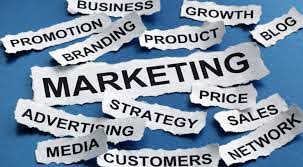Driving Growth with Cost-effective CAC Marketing Strategies
Customer Acquisition Cost (CAC) is the amount of money a business spends to acquire a new customer. CAC is a crucial metric for any business, especially those that are heavily invested in digital marketing. In today’s highly competitive business environment, it’s critical to understand your CAC and optimize your marketing strategies to minimize it.
What is CAC Marketing?
CAC marketing refers to the various marketing strategies and tactics used to acquire new customers while minimizing the cost of customer acquisition.
Businesses use different marketing channels such as search engine optimization (SEO), pay-per-click (PPC) advertising, social media marketing, content marketing, and email marketing to attract and convert new customers.
Each of these marketing channels has different acquisition costs, and understanding them is crucial to optimizing your CAC.
How to Calculate CAC?
To calculate CAC, divide your total marketing and sales expenses by the number of new customers acquired during a specific time period. For example, if you spend $10,000 on marketing and sales in a month and acquire 100 new customers, your CAC is $100.
CAC = Total Marketing and Sales Expenses / Number of New Customers
Why is CAC Important?
Understanding your CAC is important for several reasons. First, it helps you determine how much money you should spend on customer acquisition.
If your CAC is too high, you may be spending too much money on marketing, and your profit margins may suffer. Second, it helps you identify which marketing channels are most effective and which ones you should invest in more. Finally, it helps you set realistic revenue goals and track your progress over time.
How to Optimize Your CAC?
There are several ways to optimize your CAC, including:
Target the Right Audience: The first step in minimizing your CAC is to identify your target audience. You should focus your marketing efforts on the people who are most likely to buy your products or services. This can help you reduce your acquisition costs by avoiding spending money on uninterested leads.
Use the Right Marketing Channels: The next step is to use the right marketing channels to reach your target audience. Each channel has different acquisition costs, so it’s important to use the ones that are most effective and cost-efficient for your business.
Improve Your Conversion Rates: Once you’ve identified the right audience and marketing channels, you should focus on improving your conversion rates.
This involves optimizing your website or landing pages, improving your messaging, and testing different marketing strategies to see what works best.
Measure and Track Your CAC: Finally, it’s important to measure and track your CAC regularly. This will help you identify trends and adjust your marketing strategies accordingly.
In today’s highly competitive business environment, optimizing your CAC is essential for the long-term success of your business.
By understanding your CAC, you can make data-driven decisions about your marketing strategies, target the right audience, and improve your conversion rates. By continually measuring and tracking your CAC, you can make sure you’re on the right path to success.
Read Also: Dissecting Massdrop’s Unique Marketing Approach
Marketing Cost Per Acquisition

Marketing cost per acquisition (CPA) is a key metric that measures the cost of acquiring a new customer for a business. It’s a crucial metric for businesses of all sizes and industries as it provides insight into the efficiency and effectiveness of marketing campaigns.
What is Marketing Cost Per Acquisition?
Marketing cost per acquisition, also known as customer acquisition cost (CAC), is the amount of money a business spends on acquiring a new customer.
This cost includes all marketing and advertising expenses, such as pay-per-click (PPC) advertising, social media advertising, email marketing, and other promotional activities.
The cost per acquisition is calculated by dividing the total cost of marketing and advertising by the number of new customers acquired during a specific period.
For example, if a company spends $10,000 on marketing and advertising in a month and acquires 100 new customers during that time, the cost per acquisition would be $100 ($10,000 ÷ 100 = $100).
How to Calculate Marketing Cost Per Acquisition?
To calculate marketing cost per acquisition, you need to follow these steps:
Determine the time period you want to measure (e.g., a week, a month, a quarter, or a year).
Add up all the costs associated with marketing and advertising during that time period. This may include costs for ads, marketing software, marketing staff, and any other promotional expenses.
Divide the total marketing cost by the number of new customers acquired during that period.
Marketing Cost per Acquisition = Total Marketing Cost ÷ Number of New Customers Acquired
Why is Marketing Cost Per Acquisition Important?
Marketing cost per acquisition is important for several reasons. It provides businesses with insights into the effectiveness of their marketing campaigns and allows them to make data-driven decisions regarding their marketing budget. Here are a few reasons why marketing cost per acquisition is important:
Helps businesses allocate marketing budget: By calculating the cost per acquisition, businesses can determine the amount of money they need to spend to acquire a new customer. This information can help businesses make informed decisions about how much money they should allocate to their marketing budget.
Allows businesses to measure campaign effectiveness: By tracking the cost per acquisition, businesses can measure the effectiveness of their marketing campaigns. This information can be used to optimize campaigns and improve their overall performance.
Enables businesses to identify profitable channels: By tracking the cost per acquisition across different marketing channels, businesses can identify which channels are most profitable for customer acquisition. This information can be used to adjust marketing strategies and focus on the most effective channels.
Provides insight into customer lifetime value: By comparing the cost per acquisition to the customer lifetime value (CLV), businesses can determine whether they are acquiring customers at a profitable rate.
This information can help businesses set appropriate marketing budgets and ensure that their marketing efforts are generating a positive return on investment.
Marketing cost per acquisition is an essential metric for any business that wants to acquire new customers efficiently and effectively.
By tracking the cost per acquisition, businesses can measure the effectiveness of their marketing campaigns, identify profitable marketing channels, and make data-driven decisions about their marketing budget.
To optimize customer acquisition efforts and maximize return on investment, businesses should regularly calculate and analyze their marketing cost per acquisition.
Read Also: Pragmatic Marketing Strategies for Success
Customer Acquisition Strategy
Customer acquisition is the process of bringing new customers to your business. It is an essential part of any company’s growth strategy. A solid customer acquisition strategy can help a business reach its target audience, improve its brand recognition, and drive sales.
Know your target audience
The first step in customer acquisition is identifying your target audience. You need to know who your ideal customers are, what they want, and how to reach them.
Conduct market research to gain insights into your target audience’s demographics, interests, and buying behavior. This information will help you develop a targeted marketing strategy that resonates with your potential customers.
Develop a unique value proposition
A unique value proposition is what sets your business apart from the competition. It is a statement that communicates the value that your product or service provides to customers.
Your unique value proposition should be clear, concise, and relevant to your target audience. It should address their pain points and offer a solution that they cannot find elsewhere.
Choose the right channels
To reach your target audience, you need to choose the right channels for your marketing messages. There are various channels to choose from, such as social media, email marketing, SEO, PPC, content marketing, and more.
Each channel has its unique benefits and drawbacks, and you need to identify the ones that work best for your business. For example, if your target audience spends most of their time on social media, then social media marketing may be the best channel for your business.
Create engaging content
Content is a critical component of customer acquisition. Your content should educate, inform, and entertain your target audience. It should also be relevant and tailored to your target audience’s interests.
Your content can take many forms, such as blog posts, videos, infographics, podcasts, and more. The goal is to create content that resonates with your target audience and encourages them to engage with your business.
Build relationships with your customers
Building relationships with your customers is an important part of customer acquisition. You need to engage with your customers, listen to their feedback, and address their concerns.
This will help you build trust and loyalty, which can lead to repeat business and positive referrals. You can build relationships with your customers through various channels, such as social media, email, and customer service.
Customer acquisition is an essential part of any business’s growth strategy. To be successful, you need to know your target audience, develop a unique value proposition, choose the right channels, create engaging content, and build relationships with your customers.
By following these key elements, you can develop a customer acquisition strategy that drives growth and success for your business.
Performance Marketing Menefits Businesses
Performance marketing is a type of digital advertising where advertisers pay publishers or advertising networks only when a specific action, such as a sale, lead, or click, is completed.
This model allows advertisers to track and measure the effectiveness of their advertising campaigns in real-time, and optimize them for better results.
Traditional marketing methods such as print, TV, and radio advertisements involve spending a significant amount of money upfront without any guarantee of a return on investment. Performance marketing, on the other hand, is more targeted and effective.
Advertisers can set their campaign goals and pay only when those goals are achieved, which may be a click, a lead, a sale, or any other desired action.
The main advantage of performance marketing is that it allows advertisers to focus their resources and efforts on the channels and tactics that generate the best results.
By tracking the performance of each channel and campaign, businesses can identify which marketing efforts are most effective and optimize their strategy accordingly.
This not only helps to reduce wasteful spending but also enables businesses to increase their revenue and profitability.
There are several types of performance marketing, including affiliate marketing, pay-per-click (PPC) advertising, and email marketing. Affiliate marketing involves partnering with publishers or influencers who promote the advertiser’s products or services in exchange for a commission on sales or leads.
PPC advertising allows businesses to bid on specific keywords and pay only when a user clicks on their ad. Email marketing involves sending promotional emails to a targeted audience to generate leads or sales.
To succeed in performance marketing, businesses need to develop a clear strategy and set specific goals for each campaign. They must also have a deep understanding of their target audience and the channels they use to reach them.
By analyzing customer data and campaign performance metrics, businesses can continuously refine their strategy and improve their results.
One of the key benefits of performance marketing is that it offers businesses a cost-effective way to test and refine their marketing strategy. By using data and analytics to measure the success of each campaign, businesses can quickly identify what works and what doesn’t.
This allows them to continuously iterate and improve their strategy, leading to higher conversion rates, more leads, and ultimately, more revenue.
Performance marketing is an effective and efficient way for businesses to reach their target audience and achieve their marketing goals. By paying only for desired actions, businesses can reduce wasteful spending and optimize their campaigns for better results.
With the right strategy and tactics, businesses can achieve significant growth and success through performance marketing.
Read Also: Importance of Sports Technology




